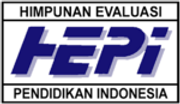Learning Obstacle the Addition and Subtraction of Fraction in Grade 5 Elementary Schools
Abstract
Keywords
Full Text:
PDFReferences
Arikunto, S. (2013). Prosedur Penelitian Suatu Pendekatan Praktik. Jakarta: Rineka Cipta.
Brosseaou, G. (2002). Theory of Didactical Situation in Mathematics. New York, Boston, Dordrecht, London, Moscow: Kluwer Academic Publishers.
Deringol, Y. (2018). Primary School Students’ Mathematics Motivation and Anxieties. Cypriot Journal of Educational Sciences, 13(4), 537-548. https://doi.org/10.18844/cjes.v13i4.3462
Fathurrohman, M., Rahayu, I., & Nindiasari, H. (2009). Pengembangan Media Pembelajaran Untuk Menghindari Mind In Chaos. Jurnal Ilmu Pendidikan, Vol. 16(2), 106-111.
Gabriel, F., Coché, F., Szűcs, D., Carette, V., Rey, B. ., & Content, A. (2013). A componential view of children’s difficulties in learning fractions. Developmental Psychology, 715(4), 1-12.
Gall, M. D., Gall, J. P., & Borg, W. R. (1999). Applying Educational Research: How to Read, Do, and Use Research (6th ed.). New York: Pearson.
Gravemeijer, K., Stephan, M., Julie, C., Lin, F. L., & Ohtani, M. (2017). What Mathematics Education May Prepare Students for the Society of the Future? International Journal of Science and Mathematics Education, 15, 105-123. https://doi.org/10.1007/s10763-017-9814-6
Kania, N. (2018). Alat Peraga untuk Memahami Konsep Pecahan. Jurnal THEOREMS (The Original Research of Mathematics), 2(2), 1-12. https://doi.org/http://dx.doi.org/10.31949/th.v2i2.699
Lestari, K. E., & Mokhamad Ridwan Yudhanegara. (2015). Penelitian Pendidikan Matematika. Bandung: Refika Aditama.
Lince, R. (2016). Creative Thinking Ability to Increase Student Mathematical of Junior High School by Applying Models Numbered Heads Together. Journal Of Education and Practice, 7(6), 206-212.
Malikha, Z., & Amir, M. F. (2018). Analisis Miskonsepsi Siswa Kelas V-B Min Buduran Sidoarjo Pada Materi Pecahan Ditinjau Dari Kemampuan Matematika. Pi: Mathematics Education Journal, 1(2), 75-81. https://doi.org/10.21067/pmej.v1i2.2329
Margono. (2007). Metodologi Penelitian Pendidikan. Jakarta: Rineka Cipta.
Nguyen, P. L., Duong, H. T., & Phan, T. C. (2017). Identifying the concept fraction of primary school students: The investigation in Vietnam. Educational Research and Reviews, 12(8), 531-539. https://doi.org/10.5897/err2017.3220
Oktaviani, N., & Mampouw, H. L. (2018). Pemberian Scaffolding pada Materi Penjumlahan dan Pengurangan Pecahan bagi Siswa SMP Berkemampuan Matematika Rendah. 1(1), 86–90.
Permendikbud Nomor 37 Tahun 2018 tentang Perubahan atas Permendikbud Nomor 24 Tahun 2016 tentang Kompetensi Inti dan Kompetensi Dasar Pelajaran Pada Kurikulum 2013 pada Pendidikan Dasar dan Pendidikan Menengah
Prastyo, H., & Salman, A. N. M. (2020). Pengembangan Soal Matematika Model Pisa Menggunakan Konteks Kalimantan Timur. Jurnal Pedagogik, 3(1), 1-44. https://doi.org/https://doi.org/10.35974/jpd.v3i1.2230 Pengembangan
Ramlah, R., Bennu, S., & Paloloang, B. (2017). Analisis Kesalahan Siswa dalam Menyelesaikan Soal Penjumlahan dan Pengurangan Pecahan di Kelas VII SMPN Model Terpadu Madani. Jurnal Ilmiah Pendidikan Matematika, 1(2), 182-194. https://doi.org/10.26877/jipmat.v1i2.1245
Rohmah, S. . (2019). Analisis Learning Obstacles Siswa pada Materi Pecahan Kelas IV Sekolah Dasar. Al-Aulad: Journal of Islamic Primary Education, 2(1), 13–24.
Sappaile, B. I. (2007). Hubungan Kemampuan Penalaran dalam Matematika dan Motivasi Berprestasi terhadap Prestasi Belajar Matematika. Jurnal Pendidikan Dan Kebudayaan, 69, 985-1003.
Siap, İ., & Duru, A. (2004). The Ability to Use Geometrical Models in Fractions. Kastamonu Education Journal, 12(1), 89-96.
Siegler, R. S., Duncan, G. J., Davis-Kean, P. E., Duckworth, K., Claessens, A., Engel, M., Susperreguy, M. I., & Chen, M. (2012). Early Predictors of High School Mathematics Achievement. Psychological Science, 23(7), 691-697. https://doi.org/10.1177/0956797612440101
Suarjana, I. ., Parmiti, D. ., & Safitri, P. E. A. (2018). Analisis Kesulitan Siswa dalam Menyelesaikan Operasi Hitung Pecahan Siswa Sekolah Dasar. International Journal of Elementary Education, 2(2), 144-155. https://doi.org/http://dx.doi.org/10.23887/ijee.v2i2.14417
Suciati, I., & Wahyuni, D. . (2018). Analisis Kesalahan Siswa dalam Menyelesaikan Soal Matematika pada Operasi Hitung Pecahan pada Siswa Kelas V SDN Pengawu. JPPM: Jurnal Penelitian Dan Pembelajaran Matematika, 11(2), 129-143.
Surya, E., Putri, F. A., & Mukhtar. (2017). Improving mathematical problem-solving ability and self-confidence of high school students through the contextual learning model. Journal on Mathematics Education, 8(1), 85–94. https://doi.org/10.22342/jme.8.1.3324.85-94
Suryadi, D. (2010). Didactical Design Research (DDR) dalam Pengembangan Pembelajaran Matematika. Prosiding Seminar Nasional MIPA. Universitas Negeri Malang.
Suryadi, D. (2018). Ontologi dan Epistemologi dalam Penelitian Desain Didaktis (DDR). Bandung: Departemen Pendidikan Matematika UPI.
Susana, A. (2017). Penggunaan Metode Inkuiri untuk Meningkatkan Pemahaman Siswa Tentang Keliling dan Luas Lingkaran di SDN Gardusayang I Kecamatan Cisalak Kabupaten Subang. Jurnal Ilmiah Edukasi, 5, 43-48.
Turmudi. (2008). Landasan Filsafat dan Teori Pembelajaran Matematika (Berparadigma Eksploratif dan Investigatif). Jakarta: Leuseur Cipta Pustaka.
Widodo, S., & Kartikasari, K. (2017). Pembelajaran Pemecahan Masalah Matematis Siswa Sekolah Dasar Dengan Model Creative Problem Solving (Cps). Prisma, 6(1). https://doi.org/10.35194/jp.v6i1.28
Wijaya, A. (2017). The Relationships between Indonesian Fourth Graders’ Difficulties in Fractions and the Opportunity to Learn Fractions: A Snapshot of TIMSS Results. International Journal of Instruction, 10(4), 221-236. https://doi.org/https://doi.org/10.12973/iji.2017.10413a.
Zengin, Y. (2017). International Forum of Educational Technology & Society Investigating the Use of the Khan Academy and Mathematics Software with a Flipped Classroom Approach in Mathematics Teaching Published by International Forum of Educational Technology & Society Inv. Journal of Educational Technology & Society, 20(2), 89-100.
DOI: https://doi.org/10.18326/mdr.v12i1.50-67
Refbacks
- There are currently no refbacks.
Copyright (c) 2020 Irfan Fauzi, Didi Suryadi

This work is licensed under a Creative Commons Attribution 4.0 International License.

This work is licensed under a Creative Commons Attribution 4.0 International License.
Program Studi Pendidikan Guru Madrasah Ibtidaiyah (PGMI)
Universitas Islam Negeri (UIN) Salatiga, Indonesia
Jl. Lingkar Salatiga Km. 2 Pulutan, Sidorejo, Kota Salatiga, Jawa Tengah 50716,
Telp. (0298) 323706 – Fax. (0298) 323433
Technical Support: jurnalmudarrisa@iainsalatiga.ac.id
P-ISSN: 2085-2061
E-ISSN: 2541-3457




